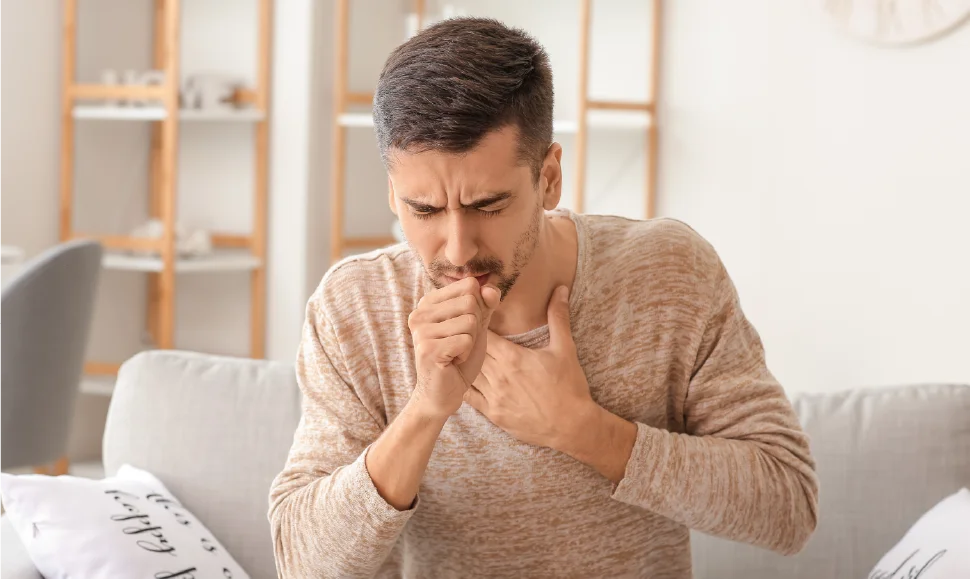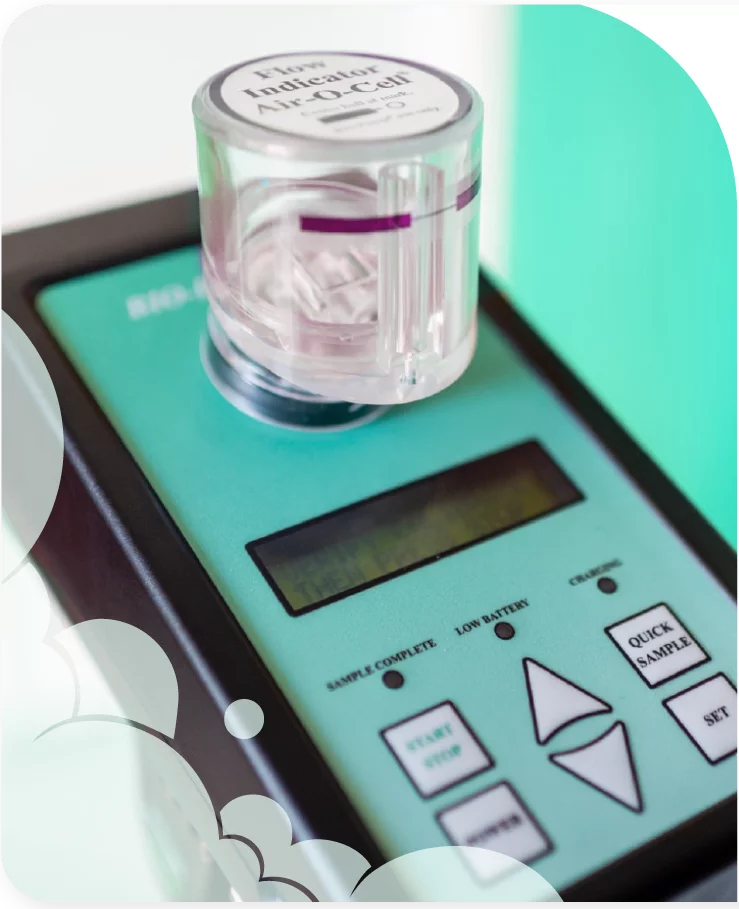Allergens Testing
and Inspection
We are ETA: Licensed, Certified, and Insured Mold Testing and Air Quality Testing Company
Whether it’s peace of mind or identifying contaminants in your indoor environment, we can give you a breakdown of what potential allergens or particulates are circulating in your relative air, along with a count to understand the affected level. The results can also be used by an allergy specialist to see if you are allergic to anything notated on the samples taken.
What are Allergens?
Allergens are substances that cause allergic reactions and trigger asthma symptoms in some people, making the immune system recognize them as foreign or dangerous. The air spreads allergens around and as a result, the immune system reacts by making a type of antibody called IgE to defend against the allergen. This reaction leads to allergy symptoms. Allergens settle onto furniture and floors vary in size and are measured in microns (also called micrometers).

Do you suspect your body is reacting to
allergens in your home?
CALL US: 954-696-3338
Some allergens include:
- Animal proteins and animal dander
- Dust: More than just dirt, house dust is a mix of sloughed-off skin cells, hair, clothing fibers, bacteria, dust mites, bits of dead bugs, soil particles, pollen, and microscopic specks of plastic.
- Airborne Fiberglass: Fiberglass can be lined on the inside of ventilation ductwork where the air blows past it, inside the plenum of an HVAC system, above ceiling panels, attics, basements, not-sealed cracks, and much more.
- Indoor Rust: Corrosion of the copper tubing in the coil from the outside is the most common cause of evaporator coil leaks. This corrosion happens when formic acid accumulates on the coil as a result of the interaction of water, copper, and volatile organic compounds (VOCs) in your indoor air.
- Drugs (such as antibiotics or medicines you put on your skin)
- Foods (such as egg, peanut, milk, nuts, soy, fish, animal meat, and wheat)
- Fungal spores
- Insect and mite feces
- Insect bites and stings (their venom)
- Natural rubber latex
- Pollen
Common Allergens Solutions
Increase the flow of outdoor air:
Let your home or building where you work or live breathe. Depending on your environment, this reduces humidity as much
as possible.
Reduce humidity:
This decreases dust mites and mold growth. Air conditioners also help reduce humidity, and can also prevent outdoor allergens.
Turn your air conditioner on recirculating:
Keep your windows and doors closed. This can help reduce outdoor allergens like pollen and mold. Your filters typically need to be changed every 3 months. However, the number of occupants can sometimes shorten or increase the time it needs to be replaced. So always pay attention and keep tabs on it.
What can you do to avoid allergens?
Now that you know what allergens are, you must know that they are present everywhere, especially in homes and buildings. The air in your home can be more polluted than outside air. While improvements in construction keep all types of pollutants out, they are also responsible for holding contaminants inside.
A part of this pollution comes from the chemicals used to make building materials, flooring, and furniture. There are ways to manage the everyday allergens floating around the average home or building. The best way to improve your air quality is to get rid of the sources of allergens and irritants in your home. Take measures to avoid and reduce your contact with allergens.
Vacuum and cleaning:
Change bedding and vacuum the bed base and mattress weekly. Always use a vacuum with a HEPA filter.
Use synthetic:
Rather than feather and down pillows, the synthetic material will help reduce the presence and infestation level of dust mites.
Avoid mold spores:
Reduce moisture around the bathroom, kitchen, and other areas where there is a lot of water.
Use dehumidifiers:
This helps control humidity levels in case the A/C isn’t working efficiently. This will also reduce both mold spores and dust mites.
Pets:
According to the U.S. Environmental Protection Agency (EPA), pets can be significant asthma triggers because of dead skin flakes, urine, feces, saliva, and hair. Some strategic steps can diminish or eliminate animal allergens at home, such as deep cleaning, including floors and walls, reducing pet exposure in sleeping areas, keeping pets away from upholstered furniture, carpeted areas, and stuffed toys, and keeping pets outdoors as much as possible.
Plants:
Limit the number of plants inside the house or office.
Cockroaches control:
Do not leave food or garbage uncovered. Use poison baits, boric acid, and traps instead of chemicals, as chemicals may irritate your sinuses and asthma.
Allergens in
Homes and Buildings
Addressing the potential causes of indoor air quality problems is very important; otherwise, they can have a detrimental impact on your health, your family’s, or your worker’s health. Get your air quality tested TODAY, and allow us to be your breath of fresh air.
- Asthma & Allergies
- Respiratory Problems
- Cognitive Impairment & Mental Health

Environmental Testing Agency provides Inspection services
for Allergens in South Florida
ALLERGENS FAQ
Indoor air quality tests measure the air for things such as allergens, mold, and radon, among others. These tests can show whether the quality of your indoor air is either safe or dangerous
Air quality is measured with the Mold Testing Index, or AQI. The AQI works sort of like a thermometer that runs from 0 to 500 degrees.
Coughing or Difficulty Breathing, Sneezing or Allergic Reactions, Skin Dryness or Irritation, Headaches or Nausea, Inability to Sleep
Itchy, stuffy nose, Clear nasal discharge, Itchy, watery, swollen, bloodshot eyes, sneezing
House Dust, mold spores, pollen, fabrics.
A typical 2,500 sq. ft single family home takes between 3-4 hours, apartments take between 2-3 hours
Learn More About Allergens
Contact Us
Contact Us

Request
A Free Estimate





